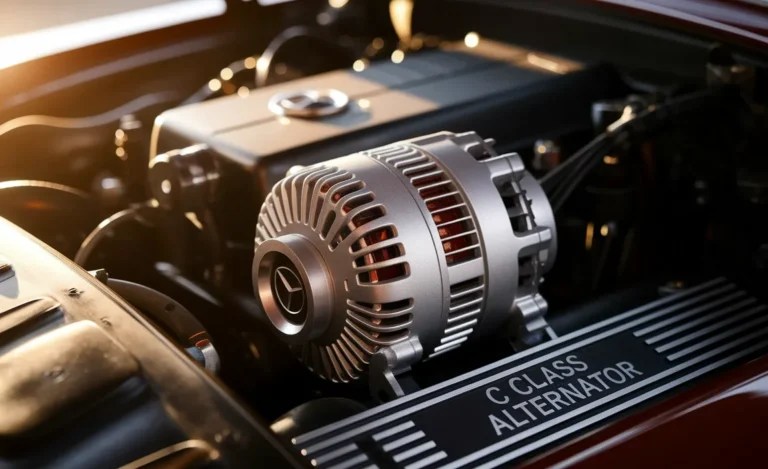Mercedes-Benz C Class Battery Jump Start: Effortless Power
Jump-starting your C-Class battery is a straightforward process. With the right steps and a little caution, you can quickly restore power to your Mercedes-Benz and be back on the road. This guide will walk you through it safely and efficiently.
Experiencing a dead battery in your beloved Mercedes-Benz C-Class can be a frustrating, albeit common, automotive hiccup. That moment of turning the key to silence, or the disheartening glow of warning lights, is something no luxury car owner wants to face. But don’t let it dim your spirits – jump-starting your C-Class is a manageable task.
At MercedesBlue, we believe in empowering you with the knowledge to handle such situations with confidence. This comprehensive guide will break down the process into simple, easy-to-follow steps, ensuring you can restore effortless power to your C-Class safely and effectively. Get ready to understand exactly what to do when your battery needs a boost.
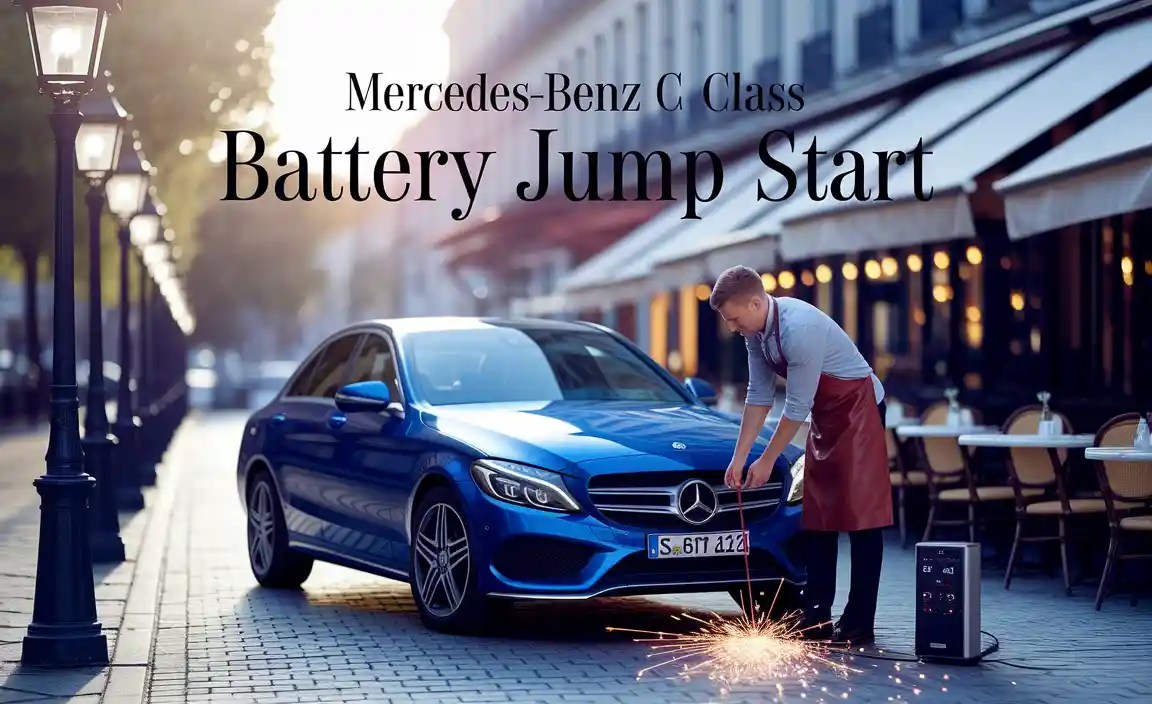
Understanding Your C-Class Battery and Why It Needs a Jump
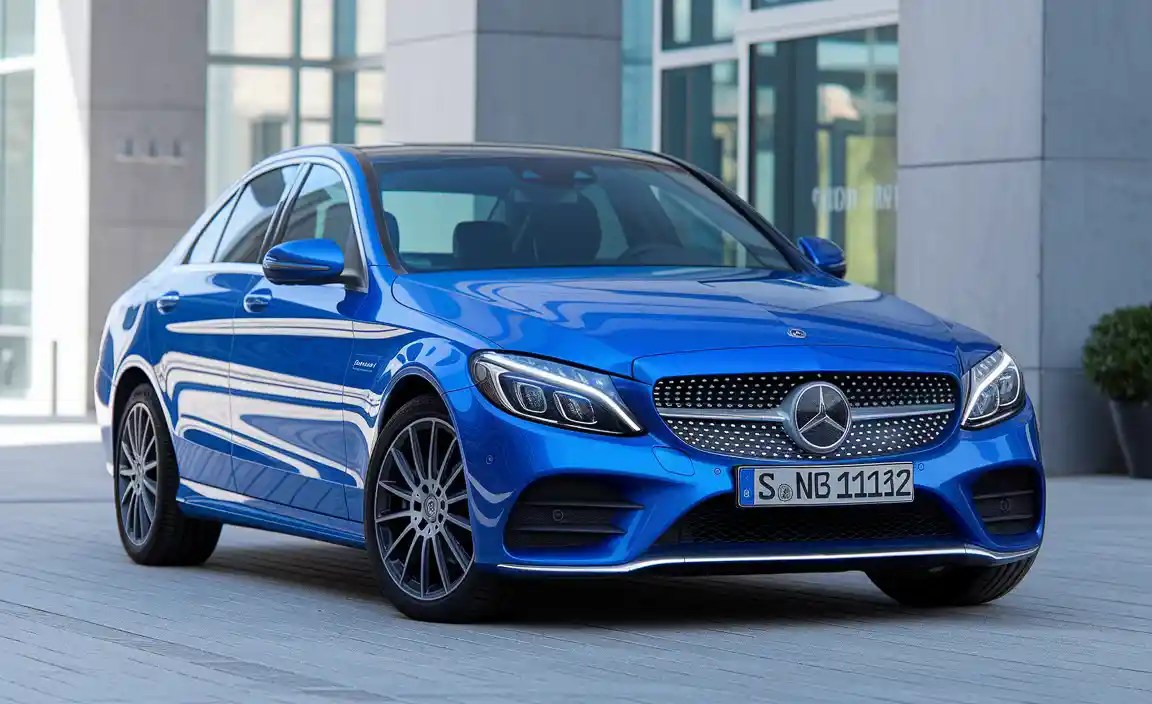
Your Mercedes-Benz C-Class, like any vehicle, relies on a robust 12-volt battery to power its sophisticated electrical systems. This battery is the heart of your car’s energy, providing the initial surge of power needed to start the engine and keeping all the electronics, from the infotainment system to advanced safety features, running smoothly.
However, various factors can lead to a drained battery. Perhaps you accidentally left a light on, the cold weather has reduced its efficiency, or simply, like all batteries, it has reached the end of its lifespan. Understanding the basics of your C-Class battery can help prevent future issues.
Common Causes of a Dead C-Class Battery
- Leaving Lights or Accessories On: Headlights, interior lights, or even charging a phone overnight without the engine running can deplete the battery.
- Extreme Temperatures: Both extreme heat and cold can affect battery performance and reduce its lifespan. Cold weather, in particular, can make it harder for the battery to crank the engine.
- Aging Battery: Car batteries typically last between 3 to 5 years. If yours is older, it may be losing its ability to hold a charge.
- Alternator Issues: The alternator is responsible for recharging the battery while the engine is running. If it’s faulty, the battery won’t get recharged.
- Parasitic Drain: This is when a component draws power from the battery even when the car is off. This can be due to faulty electronics or an improperly shutting down module.
- Infrequent Use: If your C-Class sits for long periods without being driven, the battery can discharge itself.
Essential Tools and Supplies for a C-Class Battery Jump Start
Before you begin, gather the necessary tools and supplies for a safe and successful jump start. Having everything ready will make the process smoother and quicker. For a Mercedes-Benz C-Class, precision and care are paramount, so ensure you have the right equipment.
| Item | Description |
|---|---|
| Jumper Cables | Look for heavy-duty cables with good quality clamps. Ensure they are long enough to reach between vehicles. |
| A Working Vehicle | A second car with a healthy battery to provide the jump. |
| Safety Glasses | To protect your eyes from potential sparks or battery acid. |
| Gloves | To keep your hands clean and protected. |
| Owner’s Manual | Your C-Class’s manual will specify jump-start points and any unique procedures. This is crucial for modern luxury vehicles. |
| Wire Brush or Battery Terminal Cleaner | For cleaning corroded battery terminals if necessary. |
Step-by-Step Guide: The C Class Battery Jump Start Process
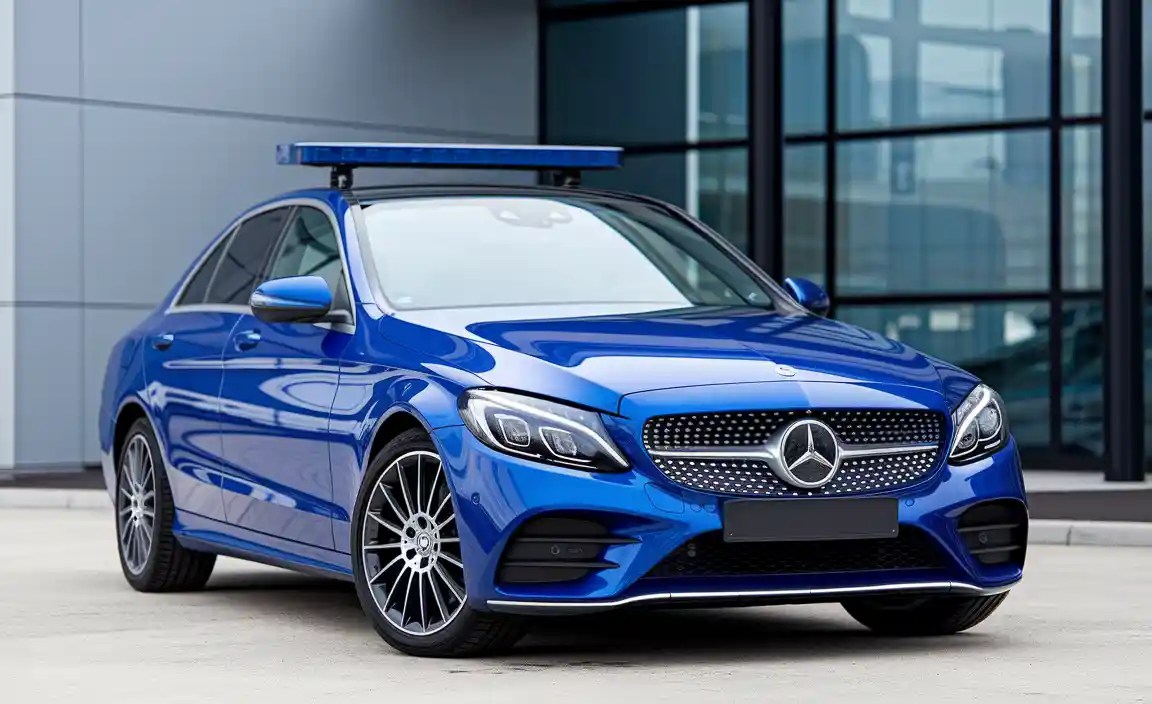
Jumping a battery involves connecting two vehicles and transferring power. While the general principle is the same for most cars, modern vehicles like the Mercedes-Benz C-Class have specific points for connecting jumper cables to avoid damage to sensitive electronics. Always consult your owner’s manual first to locate the correct jump-start terminals.
Preparation is Key
- Park Safely: Position the working vehicle close enough to the C-Class so the jumper cables can reach, but without touching either vehicle. Ensure both cars are in park (or neutral for manual transmission) with their engines off and parking brakes engaged.
- Open Hoods: Carefully open the hoods of both vehicles.
- Locate Batteries/Terminals: In many C-Class models, the battery might be in the trunk or under the hood. Your owner’s manual is the definitive guide. Mercedes-Benz often uses dedicated jump-start connection points under the hood, even if the battery is elsewhere. These are designed to protect critical electrical components.
- Inspect Cables and Terminals: Ensure the jumper cables are in good condition, with no frayed wires or damaged clamps. If the battery terminals on the dead battery are corroded, clean them with a wire brush or battery terminal cleaner for a better connection.
Connecting the Jumper Cables: The Correct Sequence
This is the most critical part. Following the correct order prevents sparks and potential damage. Remember: Red to Positive (+), Black to Negative (-).
- Connect RED to DEAD Battery: Attach one end of the RED jumper cable to the POSITIVE (+) terminal of the DEAD battery in your C-Class.
- Connect RED to GOOD Battery: Attach the other end of the RED jumper cable to the POSITIVE (+) terminal of the GOOD battery in the working vehicle.
- Connect BLACK to GOOD Battery: Attach one end of the BLACK jumper cable to the NEGATIVE (-) terminal of the GOOD battery.
- Connect BLACK to GROUND on DEAD Vehicle: This is where many guides differ, but for modern Mercedes-Benz vehicles, it’s crucial. Attach the final end of the BLACK jumper cable to an unpainted, heavy metal surface on the engine block or chassis of the DEAD C-Class. This is often called a “grounding point” and helps prevent a surge of power directly into the battery or sensitive electronics. Avoid connecting it directly to the negative terminal of the dead battery if your manual advises against it, as this can create sparks near the battery. A good grounding point is typically a few feet away from the battery itself.
Starting the Engines
Once the cables are securely connected, you can begin the process of jump-starting.
- Start the Working Vehicle: Start the engine of the vehicle with the good battery. Let it run for about 5-10 minutes to charge the dead battery slightly. You might want to rev the engine gently to around 1500-2000 RPM.
- Attempt to Start the C-Class: Try to start your Mercedes-Benz C-Class.
- If it Starts: If your C-Class starts, great! Proceed to the cable removal steps.
- If it Doesn’t Start: If your C-Class doesn’t start immediately, wait another 5 minutes with the working vehicle running, then try again. Do not crank the engine for more than 10-15 seconds at a time to avoid overheating the starter.
Disconnecting the Jumper Cables
Removing the cables must be done in the reverse order of connection to prevent sparks and short circuits. Safety first!
- Disconnect BLACK from GROUND on DEAD Vehicle: Remove the BLACK cable from the grounding point on the C-Class.
- Disconnect BLACK from GOOD Battery: Remove the BLACK cable from the NEGATIVE (-) terminal of the good battery.
- Disconnect RED from DEAD Battery: Remove the RED cable from the POSITIVE (+) terminal of the C-Class battery.
- Disconnect RED from GOOD Battery: Remove the RED cable from the POSITIVE (+) terminal of the good battery.
After the Jump
Once your C-Class is running, it’s essential to keep it that way.
Keep Driving: Let your C-Class run for at least 20-30 minutes, ideally by driving it, to allow the alternator to recharge the battery sufficiently. A short trip around the block is usually not enough.
Check the Battery System: If your battery died shortly after a jump, or if this happens frequently, it’s a strong indicator of a larger problem. The battery itself might be failing, or there could be an issue with the charging system (alternator) or a parasitic drain. We highly recommend having your battery and charging system checked by a qualified Mercedes-Benz technician.
Important Safety Precautions for Jump Starting a Mercedes-Benz C-Class
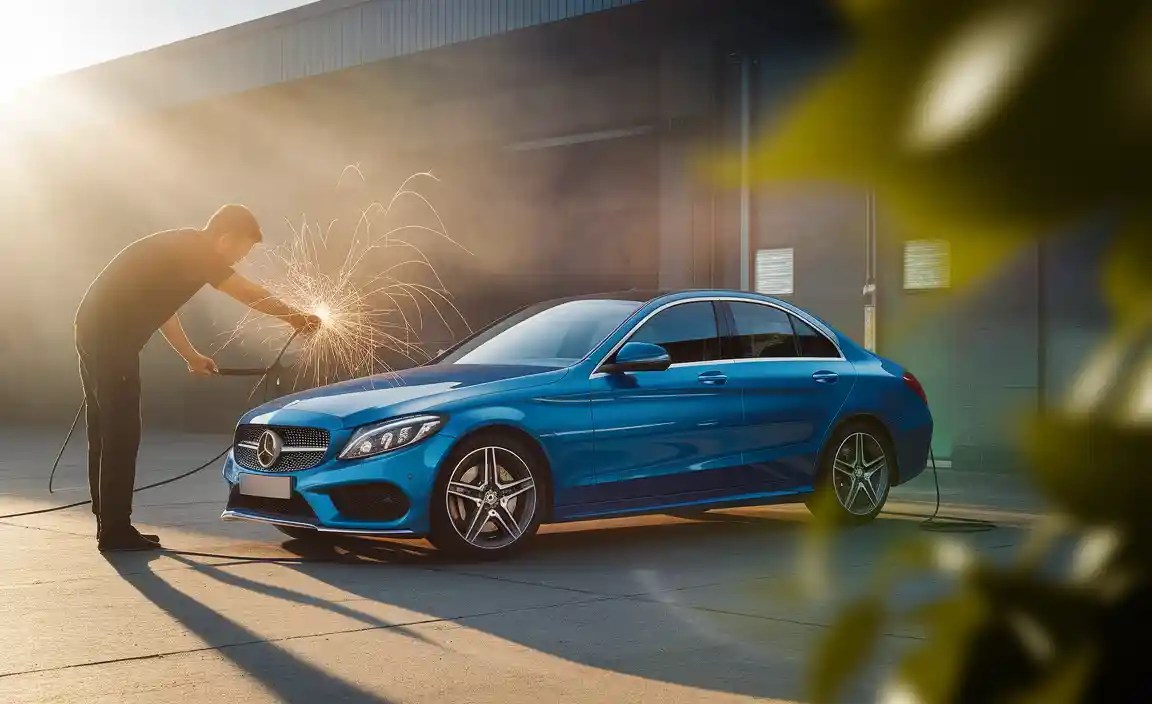
Safety is paramount when dealing with car batteries and electrical systems. Mercedes-Benz vehicles are known for their advanced electronics, making it even more critical to follow these guidelines to avoid damage or injury.
- Read Your Owner’s Manual: This cannot be stressed enough. Your C-Class manual will provide vehicle-specific instructions for jump-starting, including the exact location of jump start points. Many modern Mercedes-Benz vehicles have specific connection points under the hood, even if the battery is located elsewhere (like the trunk), to protect sensitive electronics. Accessing Mercedes-Benz Owner’s Manuals is a good first step.
- Never Let Clamps Touch: Ensure the metal clamps of the jumper cables never touch each other or any other metal parts of the vehicles once they are attached to a battery terminal.
- Avoid Sparks Near Battery: Batteries can release flammable hydrogen gas. Always connect the final ground cable (black) away from the battery to prevent sparks from igniting this gas.
- Wear Safety Gear: Always wear safety glasses and gloves to protect yourself from potential sparks, battery acid, or battery explosion.
- Check for Damage: Never attempt to jump-start a battery that is visibly damaged, cracked, leaking, or frozen.
- Correct Voltage: Ensure both vehicles have the same battery voltage (12 volts for nearly all C-Class models).
- Don’t Over-Rev: When charging the dead battery, avoid over-revving the engine of the working vehicle.
- Consult Professionals: If you are unsure about any part of the process or if your C-Class has specialized battery features (like an AGM battery or specific power management systems), it’s always best to consult a professional mechanic or your Mercedes-Benz dealership.
When to Call for Professional Help
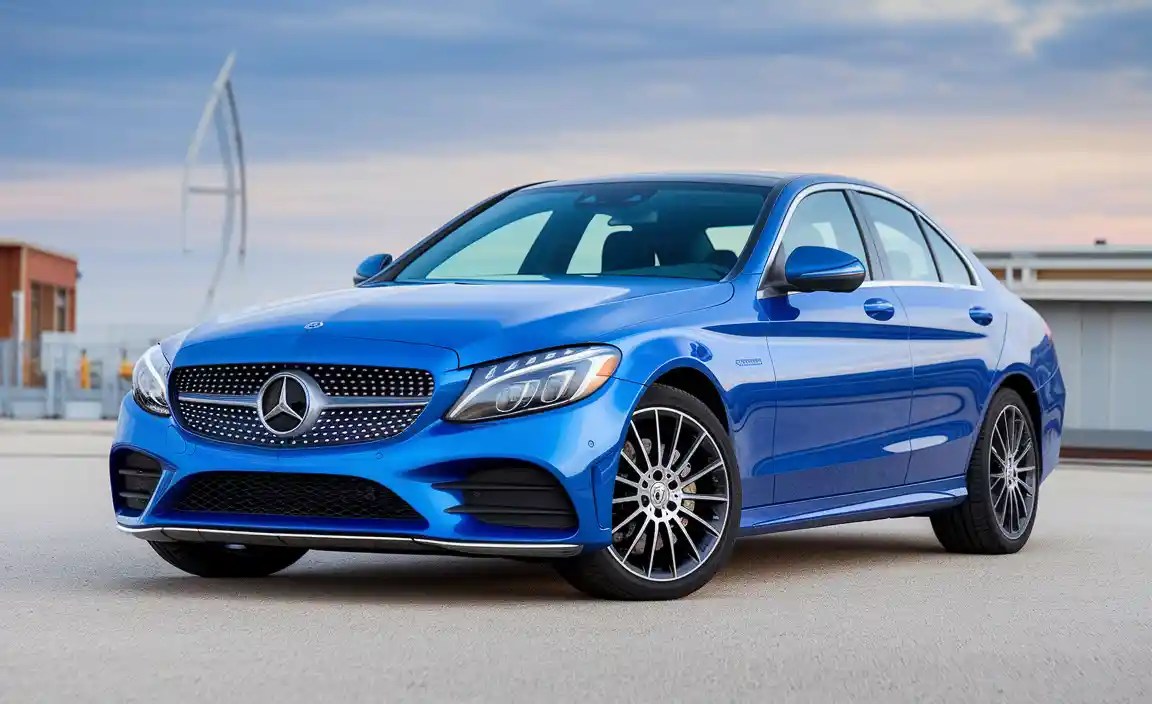
While jump-starting is a useful skill, there are times when it’s best to let the experts handle it. If you’ve tried jump-starting your C-Class and it still won’t start, or if you’re uncomfortable with any part of the process, don’t hesitate to seek assistance. Here are some scenarios where professional help is advisable:
- Repeated Draining: If your battery dies frequently, it indicates a deeper issue like a failing battery, alternator problem, or parasitic drain. A technician can diagnose and fix the root cause.
- Visible Battery Damage: If the battery is cracked, leaking, or shows signs of corrosion beyond surface dust, do not attempt to jump it. It could be dangerous.
- Unfamiliarity with Your C-Class: Modern Mercedes-Benz vehicles have sophisticated electrical systems and specific procedures for jump-starting. If your owner’s manual seems unclear or you’re hesitant, a dealership or qualified independent Mercedes-Benz specialist will know exactly what to do.
- No Start After Multiple Attempts: If your car still doesn’t crank or start after a proper jump-start attempt, the issue might be more severe than just a dead battery.
- Lack of Jumper Cables or a Working Vehicle: If you find yourself in a dead battery situation without the necessary equipment or a helping vehicle, roadside assistance is your best bet.
For professional diagnosis and repair, including battery testing and replacement, consider reaching out to your local Mercedes-Benz dealership or a reputable independent mechanic specializing in European luxury vehicles. Organizations like the Automobile Association (AA) also offer extensive guides and roadside assistance.
Conclusion: Back on the Road with Confidence
A dead battery in your Mercedes-Benz C-Class doesn’t have to be a moment of despair. By understanding the causes, gathering the right tools, and meticulously following the step-by-step procedure for a jump start, you can efficiently and safely restore power to your vehicle. Remember the golden rules: consult your owner’s manual, connect in the correct sequence, and always prioritize safety by wearing protective gear and ensuring proper ventilation.
If your C-Class’s battery needs a frequent boost, or if you encounter any issues, don’t hesitate to seek professional diagnosis. At MercedesBlue, we aim to demystify common automotive challenges, empowering you to maintain your luxury vehicle with confidence. With this knowledge, you’re well-equipped to handle a C-Class battery jump start and get back to enjoying the exceptional driving experience your Mercedes-Benz offers.
Frequently Asked Questions About C-Class Battery Jump Starts
Q1: Can I jump-start my Mercedes-Benz C-Class using any car?
For the most part, yes, but it’s best to use a vehicle with a similar engine size or larger. The key is having enough power to transfer safely. Always prioritize connecting to the proper jump-start points of your C-Class as indicated in the owner’s manual.
Q2: Where exactly are the jump start points on my C-Class?
Mercedes-Benz often designs specific jump start terminals under the hood, usually marked with a red cap or symbol, even if the battery is located in the trunk. Consult your C-Class owner’s manual for the precise location and instructions for your specific model year.
Q3: What happens if I connect the jumper cables in the wrong order?
Connecting jumper cables incorrectly can cause sparks, damage the electrical systems of both vehicles, or even lead to a battery explosion. It’s crucial to follow the sequence precisely: red to positive on both cars, black to negative on the good car, and black to a metal ground point on the dead car.
Q4: How long should I leave the jumper cables connected?
After connecting the cables, let the working vehicle run for 5-10 minutes to allow some charge to transfer. Then, attempt to start your C-Class. If it starts, leave the cables connected for a few more minutes before disconnecting them in the reverse order.
Q5: My C-Class started, but the battery died again shortly after. What’s wrong?
This usually means the battery is no longer holding a charge (it’s old or faulty) or the alternator isn’t charging the battery correctly. You’ll need to have your battery and charging system tested by a professional.
Q6: Can I use a portable jump starter instead of another car?
Yes, portable jump starters are an excellent alternative and often safer for modern vehicles. They provide a controlled surge of power. Ensure the jump starter is compatible with your C-Class battery’s voltage (12V) and has sufficient cranking amps. Always follow the jump starter’s instructions and your C-Class owner’s manual.
Q7: Is it bad to jump-start a modern Mercedes like the C-Class?
No, it’s not inherently bad if done correctly. However, modern cars have sensitive electronics. That’s why Mercedes-Benz provides specific jump-start terminals and procedures to minimize risk. Using another car’s battery requires more caution than using a purpose-built jump starter.

